Stampede Fuel Tank Liner – Seal The Deal
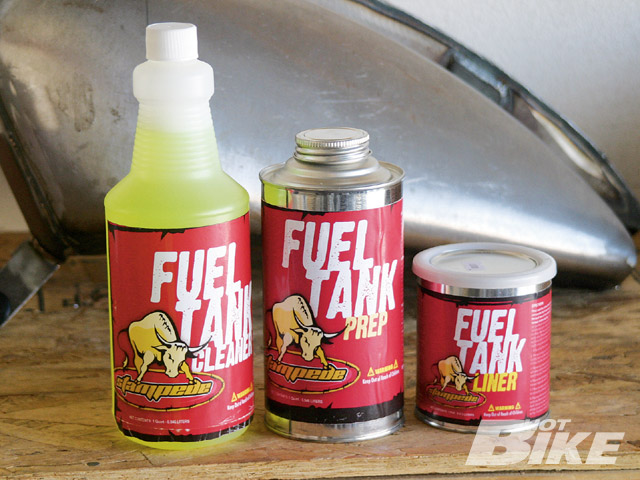
1. MC Advantages offers a Fuel Tank Liner Kit ($59.99) which comes with Fuel Tank Cleaner, Prep/Methyl Ethyl Ketone (MEK.), and One-quart of Liner. Or you can purchase everything separately. One quart of liner will coat up to a 12-gallon tank. In the back you can see the tanks we are going to be working with.
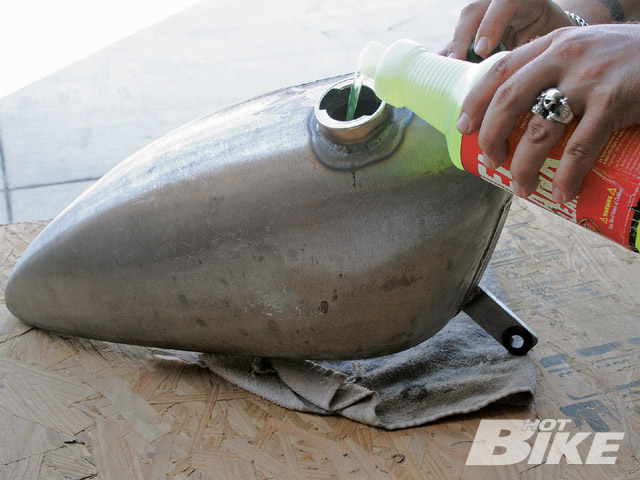
2. To get started we poured some Tank Cleaner in the tanks and sloshed it around. The Tank Cleaner is a water-soluble degreaser.
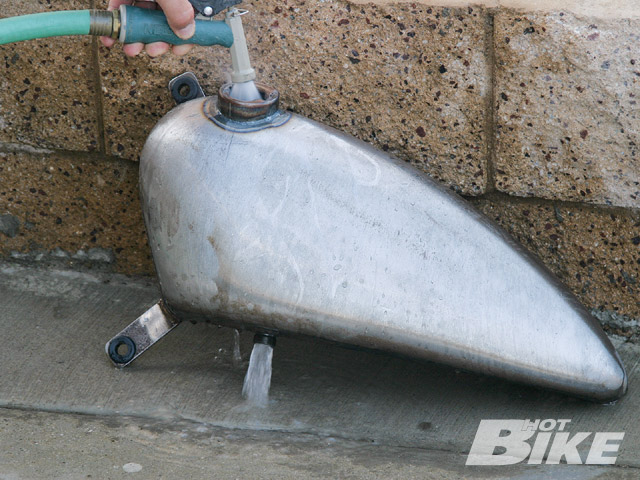
3. After thoroughly covering the inside of the tanks with the cleaner, we flushed the tanks with a garden hose. Then before moving to prep we had to make sure the insides of the tanks we’re completely dry.

4. According to the instructions without the use of a blower, drying could take up to 12 hours. With a blower you can cut that time down to about an hour. However, you can cut that time down even further if you use the Prep/MEK, which is a solvent that dissolves many substances. MEK will absorb the water and speed up the drying process. We sealed up the petcock bung and fuel line holes then poured one pint into each tank and sloshed it around, then poured it out.
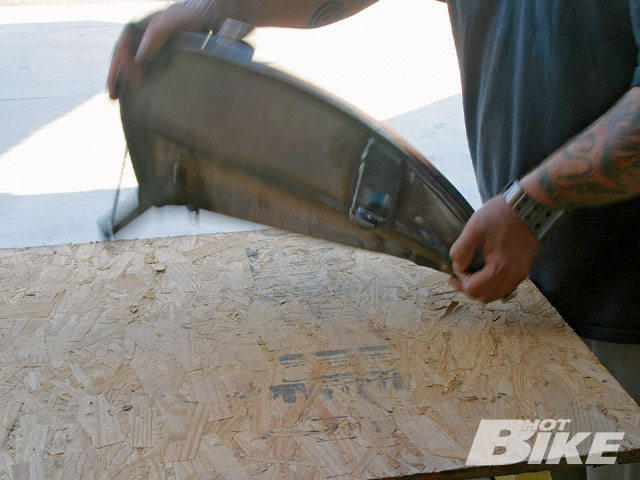
5. We then poured a second pint of MEK into each tank and repeated the process. According to the instructions you cannot re-use the first pint of MEK because one quart of MEK will only absorb up to 3 ounces of water. But you can use the second pint of M.E.K. as the first pint on your next project.
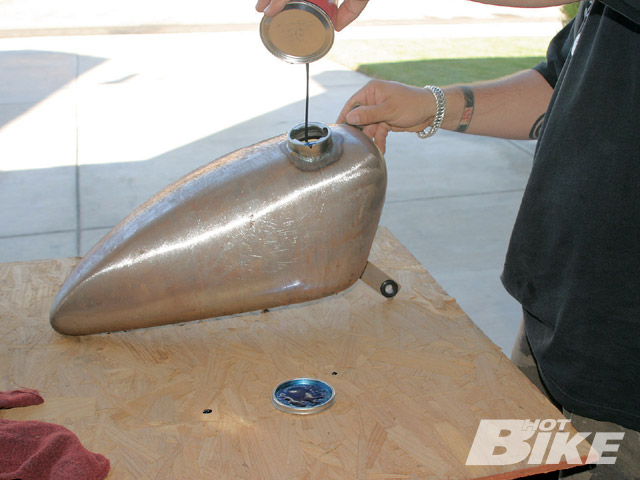
6. Once the tanks were completely dry, and with the petcock bung and fuel lines still sealed we then poured the Liner material into the tanks. Once we poured the Liner in each tank, we sealed the gas cap and then gently rocked the tanks around to get an even coat spread all around. After several minutes we checked inside to make sure the tanks were completely covered. The blue coloring of the Liner made it easy to see that the entire inner surface was covered, so we poured the excess Liner out.
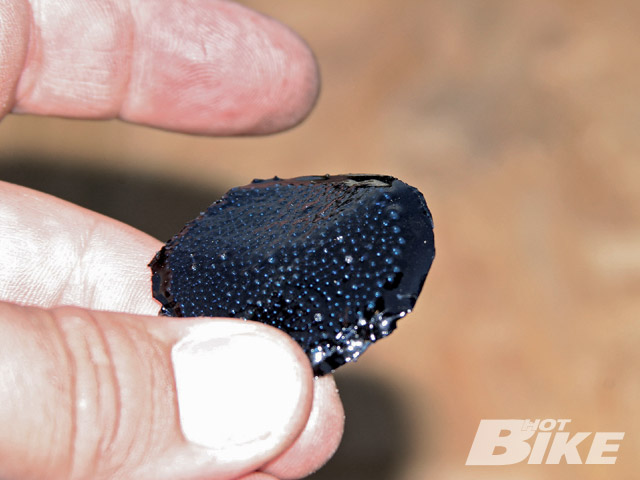
7. We then removed the tape from the petcock and fuel lines and allowed the Liner to air dry. Drying times can vary from 8-24 hours. We were interested to feel the consistency of the Liner when it dried, so we poured a little onto a flat surface and let it dry. Once dry it was definitely flexible and as we pulled at it with our fingers it stretched but didn’t tear, then contracted back to its original shape.
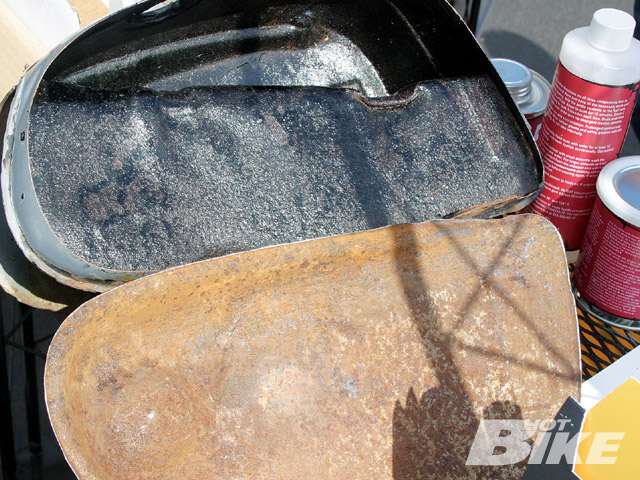
8. Here’s a cut away of a demo tank that had the Liner applied. As you can see, this was a pretty old tank with a good amount of surface rust and yet the Liner sealed the rust in. We were very happy with the results on our tanks, as it only took one coat to line them, and was a fairly quick and easy process.
When it comes to installing a new or even old gas tank on your bike there are two things you want to avoid, holes and excessive rust–you could spend hours if not days chasing down both. Holes or leaks are bad for obvious reasons. But even if your tank has no rust, if it isn’t sealed properly, over time moisture can build up and cause rust and corrosion to develop which can then lead to rust flakes clogging your fuel line, filter or worse (getting into your engine and causing damage). Recently we came across a product that solved both these problems, and best of all it was quick and easy to seal our project tank.
MC Advantages offers the Stampede Fuel Tank Liner and unlike some tank sealers, which turn into hard vinyl materials that can chip and break off when banged or dented, the Stampede liner is a polymer that resists chemical and fuels and stays flexible when it dries, so it will expand and contract with the metal and doesn’t crack. The liner has actually been used in the agricultural industry for many years to help restore old rusty tractor gas tanks. In fact that’s where the Stampede Liner differs from most products. According to Stampede the polymer liner can be used to seal pin holes up to 1/32 of an inch, and as long as there is no loose rust in the tank, it can also be used to seal-in surface rust.
The tanks we we’re working with were a set of split Sportster tanks that hold about 3.3 gallons of fuel. The tanks were fairly fresh and there wasn’t a lot of rust built up, a few small surface spots but no flaking. We had already pressure tested the tanks and they were solid with no leaks.







